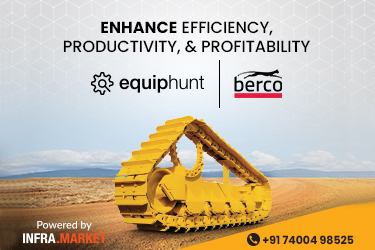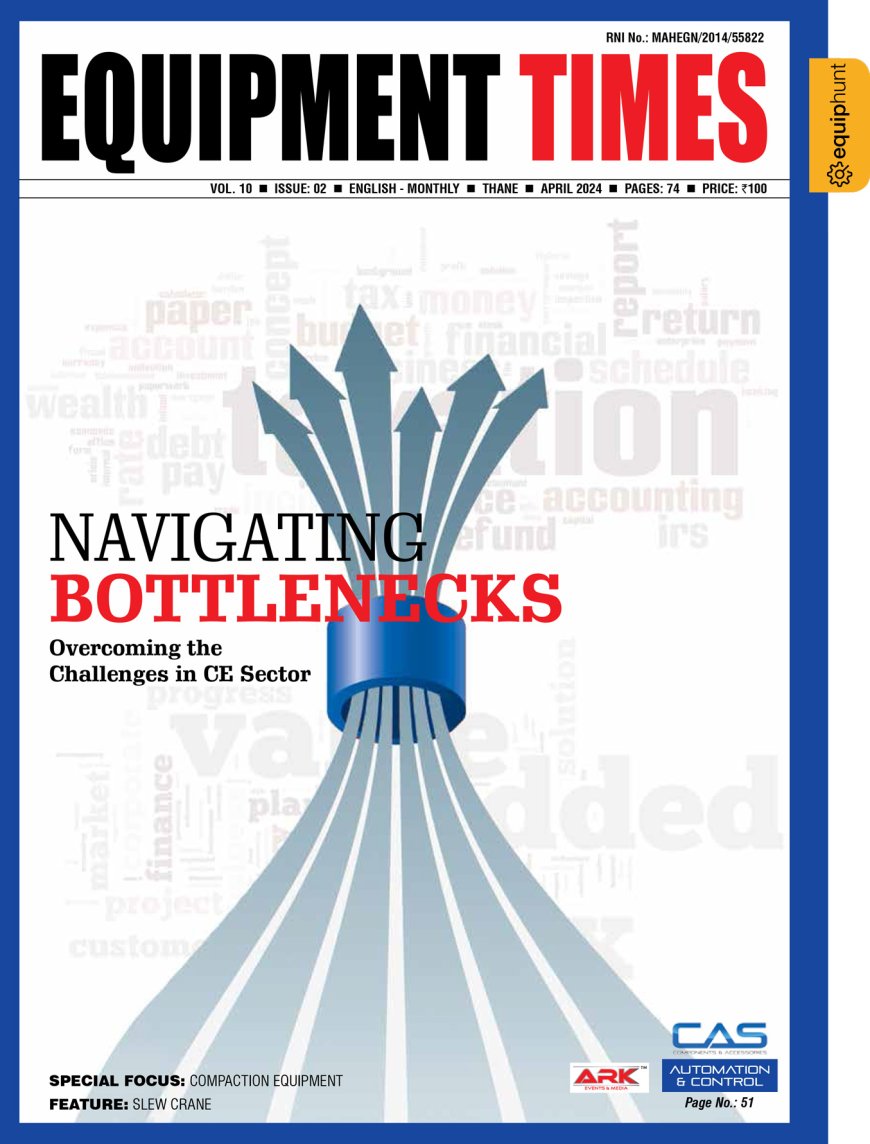Big Data & Telematics
Telematics, connectivity solutions, the cloud, and data analytics have brought unprecedented change in the construction and mining space. Agith G Antony tracks the latest developments and solution offered by OEMs and connectivity solution vendors. Digitization is fuelling the need for

Telematics, connectivity solutions, the cloud, and data analytics have brought unprecedented change in the construction and mining space. Agith G Antony tracks the latest developments and solution offered by OEMs and connectivity solution vendors.
Digitization is fuelling the need for connected products and control systems, at every stage of the value chain. Just like in any other industry, digitization is reshaping the construction equipment industry around the world. Developed countries are already reaping benefits such as higher productivity, controlled costs, perfect predictability, efficiency, quality, safety etc. Construction industry is one of the fast growing industries in India; however it is one of the least automated industries. Things are changing as mobile equipment manufacturers are offering advanced functionalities such as GPS, data collection, condition monitoring, secure remote maintenance, connectivity options and much more. With this, the barriers for adopting new technologies are falling; however, it would take some time to reach automation levels deployed in the western world.
The impact of these new technologies continues to grow and is sure to dominate the off-highway equipment space. The major equipment manufacturers have been investing in these concepts. Globally, construction equipment manufacturers are working towards providing next generation connected solutions. Data analytics, business intelligence and connected assets are of primary importance. Even though, at this stage most applications are still harvesting the low-hanging fruit like machine hours, fuel consumption, GPS tracking and idle time, as the industry space matures, more sophisticated systems will come into play bringing a paradigm shift in the industry.
Telematics
There are many applications of telematics related to connected vehicle technology. One such major highlight in use today is the vehicle or fleet tracking and health tracking of vehicles or off-highway equipment. This helps the OEMs to be in touch with their equipment and keep track of the condition. It also helps in remote areas where off-highway equipment can coordinate with other equipment enabling quick response in case of breakdowns and failures.
Today, telematics has helped the customer monitor his machines and operations sitting in the comfort of his office or home. The analysis built around the data that telematics offers, gives the customer insightful information that helps him identify whether the operations are going as per plan or if some intervention is required. Telematics also recommends on which areas of operation to focus on and how. The machine informs the customers and the dealer of any emergency situation or a potential problem. The dealer is then adequately prepared to resolve the issue at the earliest.
All this has transformed the way the modern construction sites are functioning. Enabling customers to improve system efficiencies, schedule maintenance interventions, reduce unplanned breakdowns and maximise equipment and site utilization.
“The awareness is now widely spread amongst corporate and retail customers. They have started to take a baby step towards implementation of telematics. This technology would definitely bring huge change in the near future on the following aspects such as quality of product, time bound operation, disciplined work force, and safe environment. We, Schwing Stetter India as a pioneer in the concreting equipment manufacturing are keen in addressing customer expectations with respect to digitalization. We have an in-house electronics and automation department with specialists in telematics solution,” says V. G. Sakthikumar, Managing Director, Schwing Stetter India.
Advantages Galore
“In the CE industry where competition is fierce and margins are tight, digitization helps reduce time to market, increase efficiency and provide flexibility for both OEMs and operators. The solutions such as digital twin provides a complete digital footprint of equipment, enabling OEMs to detect physical issues sooner, predict outcomes more accurately, build better equipment faster with superior quality, reduce time-to-market and costs. Virtualization is very powerful allowing visibility of equipment operations as well as interconnected vehicles,” states Saurabh Kulkarni – Mobile Automation Expert, India, B&R Automation.
He adds, “Digital Twin has several benefits, including the ability to run in line with the real equipment to enable rapid task-planning and early detection of potential problems. Digital Twin provides an integrated outlook of any project to any user at any point of the product life cycle. It enables continuous improvements in process and design as well as enhanced operations and maintenance. OEMs also leverages virtualization for faster time to market and reduced development costs. With Digital Twin, B&R helps OEMs to virtually develop and test equipment without the need of actual mechanics and electronics. This saves costs and avoids wastage in development phase, thus, increasing time to market.”
A Paradigm Shift
Historically, most maintenance and repair strategies have been built around a fixed-interval approach. It is here the impact of big data analytics and telematics has brought a profound shift on the nature of repair and maintenance services.
“The world is moving from the premise of time based maintenance to condition or data based maintenance. For this, telematics and data analytics are proving to be extremely helpful,” states Sandeep Singh, Managing Director, Tata Hitachi. At Tata Hitachi, Zaxix GI series excavators are equipped with Global e Service, an offering based on the platform developed by Hitachi, Japan. On this is layered a premium offering called ConSite, which the company offers as a standard with all its GI machines. “ConSite uses years of experience, comparative data of similar class machines operating in the region and provides insightful advice and recommendations to improve operations. There is also an alarm service which uses machine events and is an intelligent filter to communicate machine breakdown and raise caution alarms with due recommendation to the customer and to the dealer for appropriate action,” Sandeep Singh points out.
After integration with John Deere, Wirtgen India has now more access to telematics and other latest technology solutions as John Deere is one of the pioneers in this field. Speaking about the changing trends, especially in the repair and maintenance services, P Ramesh, Managing Director & CEO had this to say. “With WITOS Fleetview, the maintenance and repair strategies will be need-based and not fixed interval approach. WITOS FleetView offers a wide range of features for managing the equipment fleet that can be used to increase the construction equipment’s degree of utilization and reduce fixed costs. WITOS FleetView is the fleet management system’s core module. The entire fleet of licensed machines is listed in the fleet overview. The information provided includes all of the relevant master and operational data as well as the equipment’s current location and history.” He adds, “The malfunction view displays a list of all of the errors reported by the machinery. In addition to the error code, the system records additional information about the possible cause so that specific corrective actions can be taken. Every incident is logged in the history view, and all of them can be accessed and viewed at any time during a machine’s entire life cycle.”
Says Dheeraj Panda, Director – Sales Marketing & Customer Support, Sany India, “Telematics system definitely is turning to be big data storage for the OEM as well as the end user in terms of machine utilization information. It notifies the customer as well as Sany dealer about the service requirements of the machine. It will increase machine efficiency and reduces unexpected machine breakdowns. The system reminds the customer when the service of their machine is due and helps to plan machine utilisation in a better way. Machine backup data helps to maintain the records of past services in an organised manner. Critical machine health alerts help the customer get timely updates and take proactive measures to prevent any kind of breakdown.”
“These technology integrated machines with better interface and output will help increase the uptime of the machine. Uptime and productivity both are very crucial drivers of the machines. Increased uptime with the help of desired technological parameters will ultimately increase the life cycle of the equipment there by cutting down miscellaneous expenses and TCO,” states Ajay Aneja, Brand Leader, Case India. He adds, “We believe that technologies like our ‘Eagle Eye Telematics’ allow owners / operators to tackle this problem head on. In relation to equipment monitoring and repair, sensors can enable machinery to detect and communicate maintenance requirements, send automated alerts for preventive maintenance, compile usage, maintain data and increase efficiency by remotely monitoring fuel consumption.”
“In a largely price driven market some customers don’t fully appreciate the value that regular service and maintenance can add to their equipment and their project delivery. With the introduction of telematics, we believe the market will see a shift to not just more regular maintenance but preventive maintenance,” opines says Wilfried Theissen, Managing Director, Putzmeister India. “The Putzmeister Machine Cockpit will notify customers of critical machine conditions and help identify and diagnose faults. Customers will get alerts for maintenance and spare parts replacement schedules. These measures will help preserve the value of the machine and prevent downtimes,” says Theissen.
The significant shift in adoption of technology has resulted in increasingly ‘smarter’ and more efficient machines. Technologies like Telematics, AI has revamped the project execution in construction and infrastructure space. With a support of technology which helps in providing relay information to the operator, alerts about the geographical conditions of the machine, pre-emptive measurers to avoid downtime of the machine – increasing lifecycle have helped construction sector to redefine and foray into a more advanced era.
The following pages give a comprehensive view on the latest technologies, major challenges and services offered by major clients.
Hits: 188














